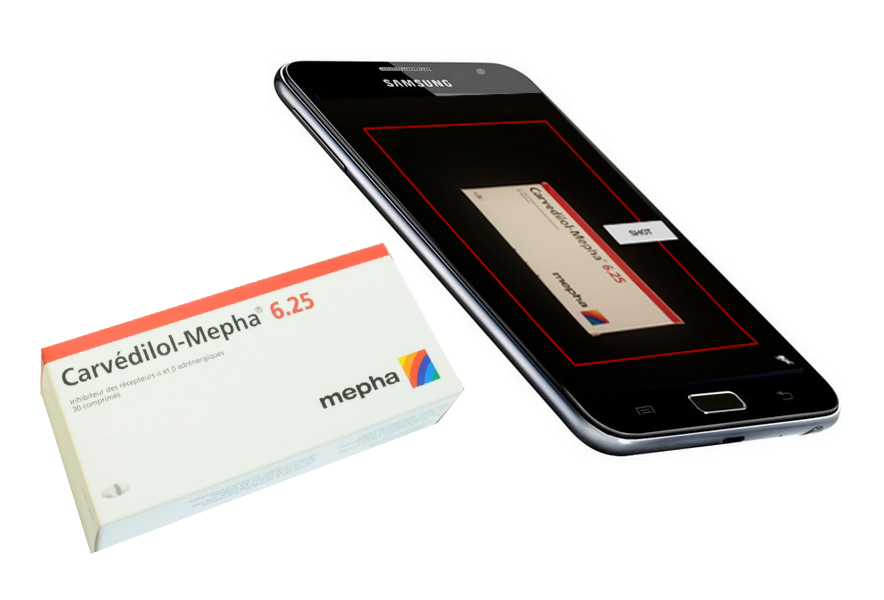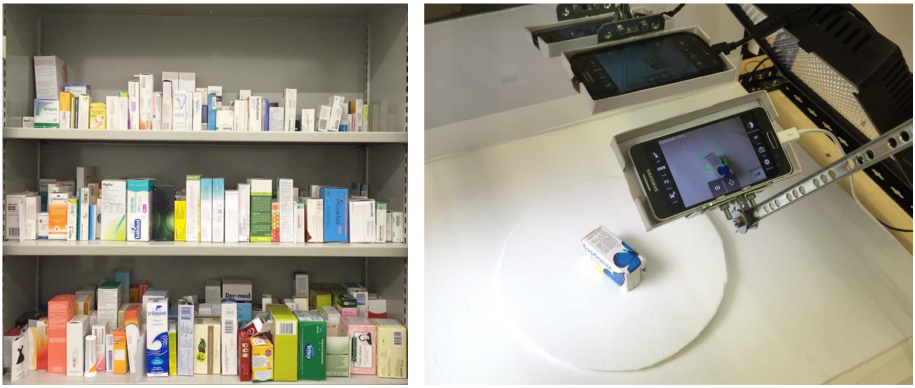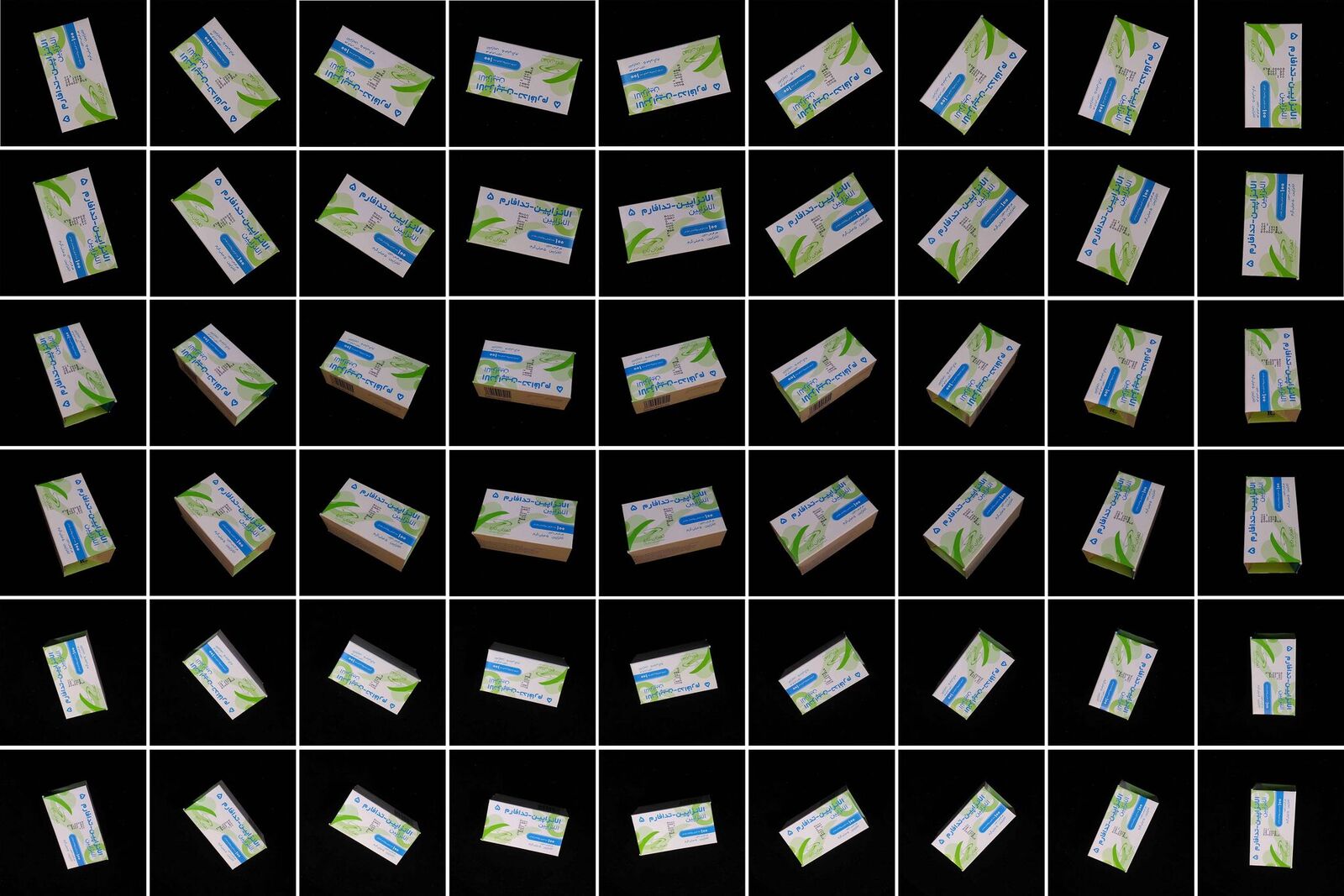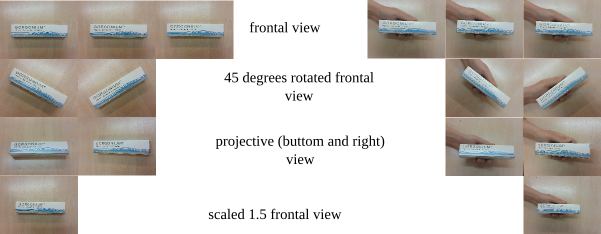PharmaPack
Public dataset of pharmaceutical packages enrolled by mobile phones.

Is now avaliable at http://pharmapack.unige.ch
PharmaPack contains photos of existing pharma packages. This data set is not for any commercial usage, distribution or reproduction. It is solely for academic usage. The authors do no make any warranty or assume any legal liability or responsibility for the accuracy, completeness, or usefulness of any information (either isolated or in the aggregate) contained, or represent that its use would not infringe privately owned rights.
1. General info
- Enrollment setup:
- 1 000 unique packages;
- 54 images per package;
- 54 000 images in total.
- Recognition setups (PharmaPack-R-I-S1 / PharmaPack-R-I-S2):
- 300 unique packages;
- 8 images per package;
- 2 400 images in total;
Citing
@inproceedings{Taran:2017:EUSIPCO,
author = {Olga Taran and Shideh Rezaeifar and Oscar Dabrowski and Jonathan Schlechten and Taras Holotyak and Slava Voloshynovskiy},
title={PharmaPack: mobile fine-grained recognition of pharma packages},
booktitle={European Signal Processing Conference (EUSIPCO)},
month={October, 1-5},
url={http://sip.unige.ch/articles/2017/eusipco-2017-Taran.pdf},
year = { 2017 },
month = { 28 August - 2 September},
address = {Kos, Grece}
}
2. Enrollment setup
1 000 unique packages have been collected in Enrollment setup (see Pic. 1.1). For enrollment each package was installed on a rotating table (covered in black color for better contrast) and 54 photos have been automatically taken by three mobile phones under different elevations and azimuths. During aquisition the fixed resolution of 8 Mpixels have been used for all phones from Samsung. Moreover, following parameters were used:
- resolution - 3264x2448 (100 %);
- flash - off;
- AWB - auto;
- exposure compensation was -2.0 EV;
- ISO - auto (EV and ISO can be manually increased/decreased in rare cases for problematic/special packages);
- brightness - 0;
- sharpness - 0;
- saturation - 0;
- anti-banding mode(AB) - 50Hz.

Pic. 1.1: Enrollment system: a subset of 1 000 pahrma packages of the PharmaPack dataset (left) and mockup of the experimental acquisition system (right).
A typical example of 54 photos enrolled per one unique package is shown in Pic. 1.2. Since the packages are of different sizes, it has been assumed that the mobile recognition app will have a frame suggesting the end user to keep the package within this frame to avoid significant cropping and scaling. For this reason, packages have been enrolled from different distances depending on their size. The light conditions have been controlled by the external LEDs. More details about the enrollment system and used aquisition conditions you can find at "PharmaPack: mobile fine-grained recognition of pharma packages", in Proc. European Signal Processing Conference (EUSIPCO), Kos, Grece, 2017 [bib]

Pic. 1.2: Example of enrolled images for one package.
3. Recognition setup
PharmaPack dataset containts 2 recognition setups:
- PharmaPack-R-I-S1: enrolled on a simple background;
- PharmaPack-R-I-S2: enrolled on the same background in hand-held position.
Each recognition setup contains 300 objects corresponding to the enrolled ones. Samsung Galaxy S5 with 8 Mpixel resolution has been used for the acquisition of 8 images per package (see Pic. 2.1) corresponding to
- three frontal views,
- two 45-degree-rotated frontal views,
- two projective views (right and bottom)
- one 1.5 scaled frontal view.
In the recognition setup, the same phone parameters were used as in the enrollment except that the exposure compensation was set to 0.

Pic. 2.1: Recognition datasets: examples of PharmaPack-R-I-S1 (left) and PharmaPack-R-I-S2 (right) acquisition.
More details about the Recognition setups you can find at "PharmaPack: mobile fine-grained recognition of pharma packages", in Proc. European Signal Processing Conference (EUSIPCO), Kos, Grece, 2017 [bib]
4. How to download?
In order to obtain an access to PharmaPack dataset it is necessaty to create an count in our system. After verification of your data the detailed explanation where you can download PharmaPack dataset will be send on your email. In case if you have aready registered to our system but due to some reason you don't have access to PharmaPack dataset please send an email to our administrator with detailed explanation of your problems.
In PharmaPack dataset you will have access to:
- Enrollment:
- down-sampled copies of original enrolled images;
- SIFT descriptors extracted from the original high-resolution images with the cropped package region (a) with a predefined number of descriptors to be 300, 500 and 1000 and (b) with varying number of descriptors chosen according to a defined reliability parameter, namely PeakThresh = 0.01;
- aKaZe descriptors extracted from the original high-resolution images with the cropped package region with a predefined number of descriptors to be 300, 500 and 1000;
- local descriptors (SIFT and aKaZe) aggregated into Fisher Vectors;
- for both Recognition setups:
- down-sampled copies of original enrolled images;
- SIFT descriptors extracted from
- the original high-resolution images with the cropped package region (a) with a predefined number of descriptors to be 300, 500 and 1000 and (b) with varying number of descriptors chosen according to a defined reliability parameter, namely PeakThresh = 0.01;
- non-cropped images with varying number of descriptors (PeakThresh = 0.01);
- aKaZe descriptors extracted from cropped images with a predefined number of descriptors to be 300, 500 and 1000;
- local descriptors (SIFT and aKaZe) aggregated into Fisher Vectors;
More details about the used parameters and obtained results you can find at "PharmaPack: mobile fine-grained recognition of pharma packages", in Proc. European Signal Processing Conference (EUSIPCO), Kos, Grece, 2017 [bib]
This data set is not for any commercial usage, distribution or reproduction. It is solely for academic usage. The authors do no make any warranty or assume any legal liability or responsibility for the accuracy, completeness, or usefulness of any information (either isolated or in the aggregate) contained, or represent that its use would not infringe privately owned rights.

